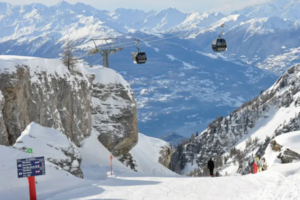The summit of Mount Everest is very treacherous. It poses a risk to one’s life. However, the Everest Base Camp Trek is a lot safer than climbing Everest.
Every year, climbers and Sherpas must contend with much higher altitudes. They account for the majority of fatalities on Everest that are reported. Due to the higher altitude, there will be more harsh weather and a higher possibility of fatal falls. However, the ones trekking at the lower elevation of Everest Base Camp do not experience this. Even so, there are still dangers associated with the Everest Base Camp Trek.
Possible threats of EBC
Everest Base Camp is at the foot of the world’s tallest mountain. As a result, trekkers are susceptible to altitude sickness.
Furthermore, avalanches can occur at Everest Base Camp. The devastating avalanche in 2015, which resulted from the 2015 earthquake, claimed the lives of 19 climbers. Statistics on fatalities among climbers of Mount Everest are easily accessible. However, no official figures for fatalities on Base Camp treks and associated routes are available.
We estimate that 3-5 people perish annually while trekking to Everest Base Camp. This number’s higher range is between 12 and 15. These numbers are estimates. However, they account for just 0.03% of the 30,000 trekkers who die each year.
The majority of the possible deaths per year are brought on by illnesses related to high altitude. The high altitude can also worsen underlying conditions, such as heart disease. Even though you aren’t actually ascending Everest, you might get as high as 5,600m. This remains higher than the majority of mountains on earth.
Altitude is a major factor in almost all trekking fatalities in the Everest region. Ascending too quickly and high causes acute mountain sickness. Acute mountain sickness manifests in conditions like cerebral edema and pulmonary edema.
Precautions for a safe Everest Base Camp trek
Your guide should advise you to stay put or descend to a lower altitude if signs of altitude sickness are found. Most fatalities occur when climbers attempt to continue ascending without accommodating to the altitude. They only turn around when it is too late. So it is crucial that you abide by the instructions of the guides.
The symptoms of altitude sickness can appear very suddenly. Sometimes you or someone in your group might stop moving suddenly. You will need to set up an immediate helicopter evacuation in such cases. It is a good thing that there are plenty of helicopter operators in the Everest region. However, a helicopter pick-up and drop-off in Lukla is quite expensive.
We have mentioned the sudden trigger of underlying issues in high places. Due to the altitude, underlying conditions may also become more apparent. Numerous cases of trekkers passing away from heart conditions have been documented. You should consult your doctor about such issues before heading to high-altitude places. Your doctor might diagnose you with hereditary or underlying conditions.
Conclusion
In general, everyone can safely complete the Everest Base Camp Trek. The risk of the trek should be extremely low with some advance planning. The right equipment and adequate acclimatization are a must.





